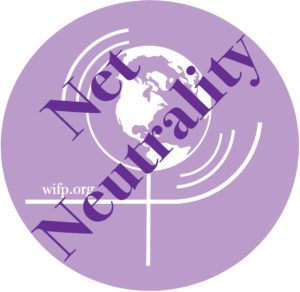6 Points
Six Point Communications Program for Restructuring the World’s Communications System on the Basis of Democracy
by Donna Allen, Ph.D.
1. Democracy is
1) EVERY PERSON having an equal opportunity to be heard so their information (opinions, experience, perspectives) can be taken into account in the decision-making, which enables them to participate in self-government as political equals — the very definition of democracy.
2) SOCIETY needs everyone’s information in order to reach viable decisions – the goal of democracy.
2. The present media structure does not meet either of these two requirements
1) Fewer than 1% of the population is able to reach the general public with their information. (In the U.S., owners of the four main TV networks alone reach 98% of American households 7 days a week, 24 hours a day. And all mass media owners, small or large, do not total more than 2 million people, less than 1% of the population.)
2) Society’s decisions cannot be viable if made primarily on information selected for us by an unrepresentative 1% wealthy white males of our population.
3. But people worldwide are now building a new communications structure that can meet the needs of democracy
The long-unheard people of the world are creating a new communications structure which enables them to speak for themselves, using new technologies from World War II’s offset press which made print media affordable for anyone (giving rise to the “underground press” and new people’s movements for the environment, civil rights, peace, women’s equality, and more) to the now even more accessible and affordable electronic media that reaches an estimated 70 million people worldwide with 20 million users of over 10 million World Wide Web sites, and with internet and data traffic growing at a rate of 80% a year. America OnLine alone serves over 80 million E-mail messages per day. In early 1999 women became the majority of online users.
4. New information heard now by the public for the first time is bringing new decisions redefining society’s values
For example, after thousands of years of the belief that violence to women was a minor problem, or man’s right, it took only two decades of women speaking for themselves in their own media to communicate enough new information to pass in a 1994 U.S. federal law condemning violence to women and appropriating over $2 billion to begin taking steps to eliminate it. Similar efforts worldwide were supported by the 188 nations meeting in Beijing at the September 1995 U.N. Fourth World Conference of Women, and further progress is continuing at a steadily increasing rate in every part of the world, resulting in progress for women in four major issue areas: 1) survival issues: health, safety, and peace; 2) independence issues: economic equality, education; 3) political issues: equality in participation and representation; and 4) communication issues: providing equal access to the whole public by all of us speaking for ourselves.
5. But it is still our responsibility as citizens to correct the present media structure’s violations of democracy
While we build our own communications system, it is still our citizen duty in a democracy to correct the undemocratic favoritism to a minority on the basis of their wealth, color or gender. Proposals on how to do this need to be offered, circulated, discussed, and supported; conferences held, legislation sought, and regulations petitioned for change, as for example, in licensing the airwaves, protecting micro-radio, and in other ways to apply common-carrier status to all communications media, especially to protect the new technologies for increased equal and open communication of all people.
We need to restore the equal protection of our US Constitution’s First Amendment free press right as the citizen right originally intended as part of the Bill of Rights for individuals, and to directly challenge its interpretation as a corporate property right when the Supreme Court stated in 1886 that a corporation was a “person” under the Constitution. We need to launch a class action suit to overturn the 1886 ruling and affirm the First Amendment as a citizen right.
6. It is the majority’s job to make democracy work – and thus is as the world’s majority the special task of women
Creating a communications structure in which people can speak for themselves has long been a primary goal of women, as both the majority in the world and the majority of every race, creed, color, or other identity. Women have made communication equality their priority task especially since the 1960s, in building their own media with the then-new technologies, and now electronic media. Key among eight characteristics that distinguish women’s media from men-owned media are qualities that indicate that women can offer suitable leadership to restructure media and increase democratic equality of communication for all people based on women’s characteristically non-attack, non-competitive, non-hierarchical, open forum media approach. Women see democratization of communication as “women’s work” to nurture more diversity of information that will result in decisions that are more peaceful and more respectful of others as needed in a democratic society.
© Copyright 1974, 1999, Donna Allen, Women’s Institute for Freedom of the Press
 The Women’s Institute for Freedom of the Press
The Women’s Institute for Freedom of the Press
